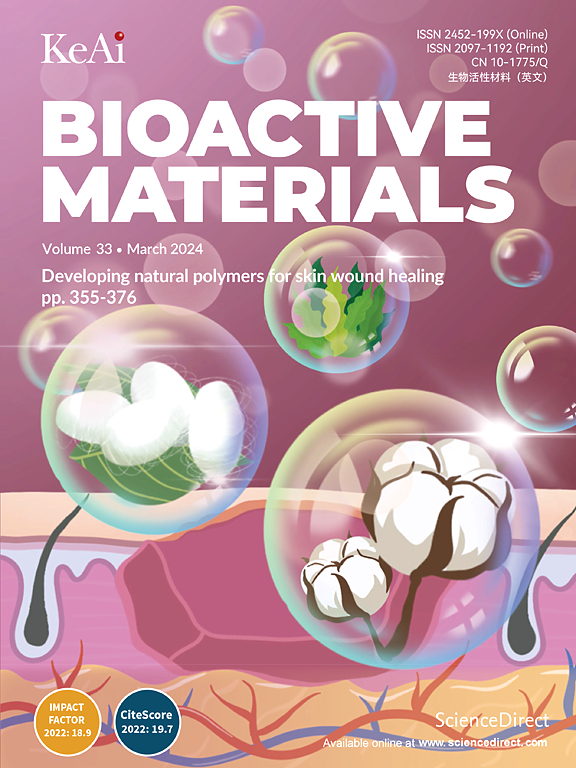Hydrogen bonding-mediated phase-transition gelatin-based bioadhesives to regulate immune microenvironment for diabetic wound healing
IF 18
1区 医学
Q1 ENGINEERING, BIOMEDICAL
引用次数: 0
Abstract
Gelatin-based biomaterials have emerged as promising candidates for bioadhesives due to their biodegradability and biocompatibility. However, they often face limitations due to the uncontrollable phase transition of gelatin, which is dominated by hydrogen bonds between peptide chains. Here, we developed controllable phase transition gelatin-based (CPTG) bioadhesives by regulating the dynamic balance of hydrogen bonds between the peptide chains using 2-hydroxyethylurea (HU) and punicalagin (PA). These CPTG bioadhesives exhibited significant enhancements in adhesion energy and injectability even at 4 °C compared to traditional gelatin bioadhesives. The developed bioadhesives could achieve self-reinforcing interfacial adhesion upon contact with moist wound tissues. This effect was attributed to HU diffusion, which disrupted the dynamic balance of hydrogen bonds and therefore induced a localized structural densification. This process was further facilitated by the presence of pyrogallol from PA. Furthermore, the CPTG bioadhesive could modulate the immune microenvironment, offering antibacterial, antioxidant, and immune-adjustable properties, thereby accelerating diabetic wound healing, as confirmed in a diabetic wound rat model. This proposed design strategy is not only crucial for developing controllable phase-transition bioadhesives for diverse applications, but also paves the way for broadening the potential applications of gelatin-based biomaterials.

求助全文
约1分钟内获得全文
求助全文
来源期刊

Bioactive Materials
Biochemistry, Genetics and Molecular Biology-Biotechnology
CiteScore
28.00
自引率
6.30%
发文量
436
审稿时长
20 days
期刊介绍:
Bioactive Materials is a peer-reviewed research publication that focuses on advancements in bioactive materials. The journal accepts research papers, reviews, and rapid communications in the field of next-generation biomaterials that interact with cells, tissues, and organs in various living organisms.
The primary goal of Bioactive Materials is to promote the science and engineering of biomaterials that exhibit adaptiveness to the biological environment. These materials are specifically designed to stimulate or direct appropriate cell and tissue responses or regulate interactions with microorganisms.
The journal covers a wide range of bioactive materials, including those that are engineered or designed in terms of their physical form (e.g. particulate, fiber), topology (e.g. porosity, surface roughness), or dimensions (ranging from macro to nano-scales). Contributions are sought from the following categories of bioactive materials:
Bioactive metals and alloys
Bioactive inorganics: ceramics, glasses, and carbon-based materials
Bioactive polymers and gels
Bioactive materials derived from natural sources
Bioactive composites
These materials find applications in human and veterinary medicine, such as implants, tissue engineering scaffolds, cell/drug/gene carriers, as well as imaging and sensing devices.
 求助内容:
求助内容: 应助结果提醒方式:
应助结果提醒方式:


